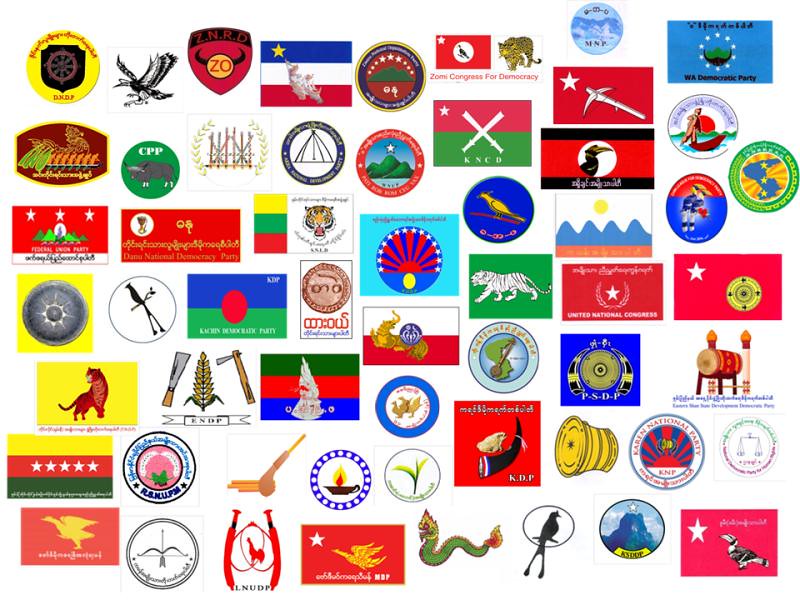

- Of the 91 political parties registered to take part in the elections, nearly two-thirds (59 parties) represent ethnic or religious minorities
- These include parties from seven major ethnic groups that have their own states (Kachin, Karenni, Karen, Chin, Mon, Rakhine, Shan) as well as smaller sub-minorities.
- Most major ethnic groups are represented by at least two parties or more.
- Given the first-past-the-post electoral system, only a small proportion of the parties that contest are likely to win any seats, according to an analysis of ethnic politics by the Transnational Institute (TNI).
- Only 21 of the 36 parties standing in the 2010 elections did so but observers predict that the proportion is likely to be smaller this time given the greater number of parties registered, including a large number of small parties and the hugely popular National League for Democracy.
- Despite fears of vote splitting, there has been only one successful merger between ethnic parties. The Rakhine Nationalities Development party which ran in 2010 and the Arakan League for Democracy which contested the 1990 vote merged in March 2014 to form the Arakan National Party.
- There seemed to have been a shift away from 2010 parties in favour of 1990 parties due to perception that the former were co-opted in the 2010 polls, the International Crisis Group said. The 2010 elections were widely criticised as rigged.
- The Union Election Commission has cancelled voting in some 600 conflict-affected villages nationwide. These include seven townships or constituencies in Shan State as well as village tracts in Shan State, Kachin State, Karen State, Bago Region and Mon State. In 2010, voting was cancelled in 478 village tract
- Observers and rights groups have also expressed concerns over the disenfranchisement of hundreds of thousands of voters shut out from voting due to the cancellation of Temporary Registration Certificates, which are commonly known as white cards, in March 2015.
- Of the 99 parties that contested in the 1990 elections, half were ethnic nationality parties.
- They won a total of 71 seats (15 percent), representing nearly all of the seats that were not taken by the National League for Democracy (392 seats or 81 percent). In contrast, the National Unity Party (NUP), the successor to the previous ruling party - General Ne Win’s Burma Socialist Programme Party (BSPP) - only won 10 seats.
- The Shan Nationalities League for Democracy (SNLD) won 23 seats and became the largest electoral winner after the NLD. However, the results of the election were ignored by the ruling military junta.
- In the 2010 polls, 37 parties competed, of which 60 percent were ethnic-based parties.
- Of the 21 parties that won seats, 16 were ethnic nationality parties. They won 180 seats (16 per cent of the total).
- The Shan Nationalities Democratic Party (SNDP) became the third-largest party (after the ruling Union Solidarity and Development Party and NUP).
- The Rakhine Nationalities Development Party (RNDP) secured the largest block of seats in the Rakhine State legislature, ahead of the USDP.
- The main exceptions in electoral representation were the Kachin, who were systematically excluded through non-registration of their key parties, and the Karenni, whose main party failed to complete the registration process, allegedly under duress.
- Due to the presence of significant ethnic minority populations in some regions, the 2008 constitution created 35 more representatives - 29 from national race representatives and six from newly self-administered areas.

